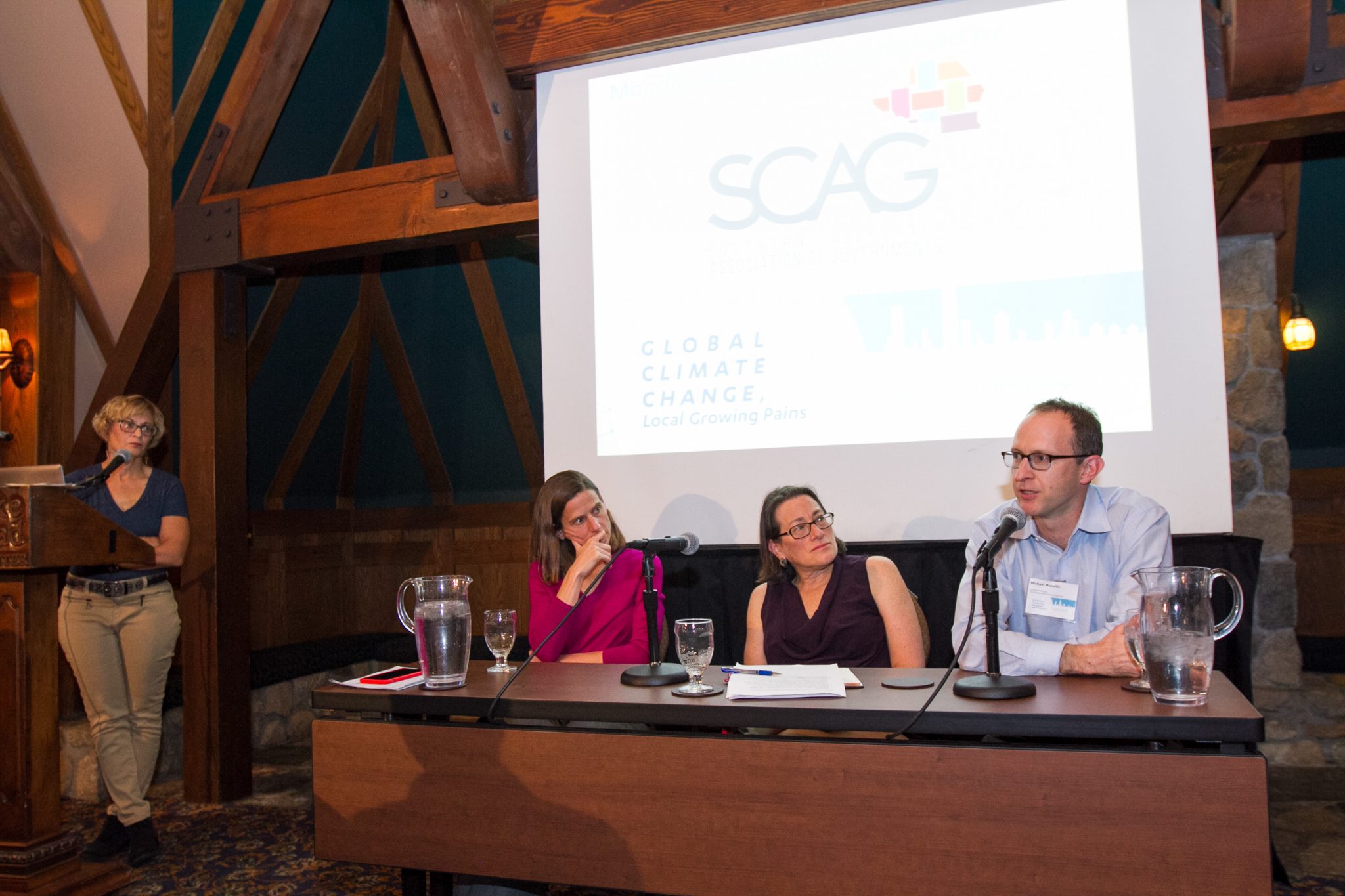By Jordan Fraade
The 27th Annual UCLA Lake Arrowhead Symposium – “Global Climate Change, Local Growing Pains” – tackled the connections and conflicts between sustainability goals and land use policy in California and beyond. Here’s a dispatch from a session on Monday, October 16, and a summary video with the three panelists.
Users of our transportation system are accustomed to flat fees — a single fare per transit ride, a set per-hour rate for street parking, a fixed delivery fee for packages, and so on. Economists and planners often suggest using “pricing” to improve transportation efficiency, or making users pay for what they consume in a way that would moderate excesses and encourage sustainable choices. On a panel moderated by Therese McMillan of Metro, Dr. Michael Manville of the UCLA Luskin School of Public Affairs, Ellen Greenberg of the California Department of Transportation (Caltrans), and Dr. Anne Goodchild of the University of Washington offered some ideas on different ways to price the transportation system, from package delivery to everyday auto travel.
Dr. Manville explained that when it comes to the costs of driving, people tell themselves that traffic is a problem caused by somebody else. This essential creates price controls on driving: Regardless of how valuable land is in a given city, how many people live there, or what time of day it is, using and storing a car on the road is free or close to free. Instead of solving this problem by charging drivers for what they consume, Dr. Manville said that we’ve instead chosen to blame congestion on new housing, by requiring real estate developers to complete traffic impact studies or fulfill minimum parking quotas. As a result, new housing is more expensive without providing any meaningful improvements to congestion. Dr. Manville argued that the proper way to deal with transportation impacts is to regulate roads and parking spaces with a comprehensive, data-driven pricing system.
Ms. Greenberg, the deputy director for sustainability at Caltrans, discussed the agency’s plans to use the dual tools of pricing and technology to manage new sources of state funding. The state’s overall goal is to develop a transportation system that increases resilience and mitigates the environmental impacts of automobiles without suppressing necessary trip-making, and some recent private-sector developments, including commitments from Ford and GM to manufacture autonomous and zero-emission vehicles, may help. The recently passed SB1, meanwhile, raises the gas tax, indexes it to inflation, and levies several new taxes on vehicle fuels and registration, raising an anticipated $5 billion per year. Ms. Greenberg said that the state has not specified one single pricing system but that Caltrans anticipates spending some of the new SB 1 revenue to develop a combination of managed lanes programs, such as high-occupancy toll lanes, and dynamic real-time pricing.
Dr. Goodchild focused on what she called the “logistics of living,” or the changes to the freight and goods movement systems that allow packages to be delivered straight to homes. Compared to individuals making trips to a central store, delivery from a single vehicle on a route tends of decrease overall vehicle miles traveled, and studies from Seattle in particular show that delivery services are far less carbon-intensive than passenger-vehicle travel. However, Dr. Goodchild noted that currently, fees for delivery trips are usually independent of how much they cost to provide — shipping with Amazon Prime is free no matter where a customer lives or what they order. She concluded that the consolidation of goods delivery is a promising trend, but adding some pricing mechanisms would ensure that we fully account for high-cost or carbon-intensive delivery trips.
